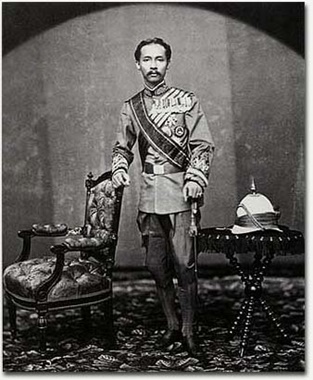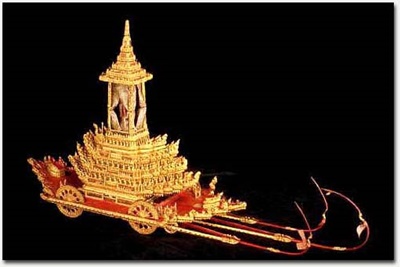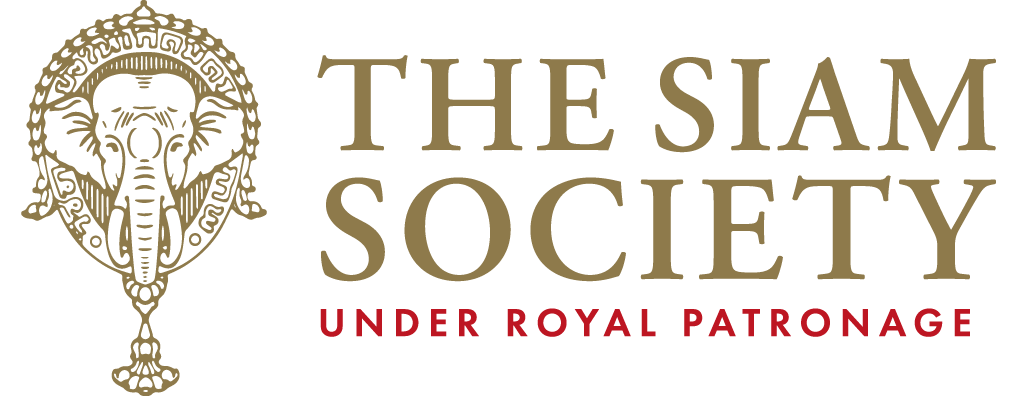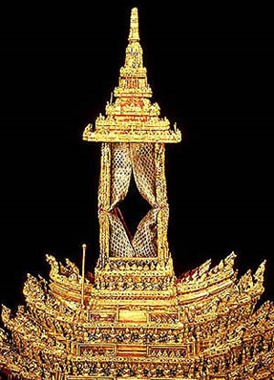3c. Thai Royal Gifts in Perspective: Symbols of a Lasting Friendship
Royal Gifts from Thailand
Smithsonian – Gallery 3
Thai Royal gifts to America began with very traditional types of gifts, the “Gifts of Welcome”, the “Gifts of Respect” khru’angrachabannakan, and the khru’angyot, or bestowal of insignia of rank. The kru’ang yot gift was very specific as to timing, content, and designated receiver, and was the basis for later elaborations and manifestations of the Thai Royal Gift. Over a 160-year time span, the Thai Royal Gift has changed in every one of its aspects.


The king does continue to bestow insignia of rank upon Western heads of state from time to time; however, by the end of King Chulalongkorn’s 43-year reign, much of the traditional insignia worn by the king and noblemen at court had been replaced by Western symbols. Western-style military uniforms had for the most part replaced the imported Indian Benares silks; new Western-style medals replaced other insignia; and the power of the king was no longer measured in the number of people, craftsmen and others, whose labor he controlled. The king’s power had to confront and become more analogous to a Western power in some respects — the Kings became great benefactors, and prevented colonial encroachment through Western-style treaty agreements; the Kingdom gained new wealth from international trade.
Thai Royal Gifts have changed from being part of a tribute-fed redistributive system centered on the court to the type of gift that focuses instead on the role of the Thai court as benefactors of Thai tradition, emphasizing the artistic talents and accomplishments of the people of Thailand.


King Chulalongkorn in 1881 Dressed in Western-Style Uniform
- Gift of King Chulalongkorn, 1881
- Harris Treaty Revisions
- National Anthropological Archives
- Inventory no: 048391.00
King Chulalongkorn was surrounded from an early age by relatives who were enthusiastic about the West. His father, King Mongkut, Rama IV, and his uncle, Phra Pin Klao, and the regent, Somdet Chao Phraya Borom Maha Sri Suriyawongse (Chuang Bunnak), were avid scholars of Western scientific advances and scientists in their own right. These men befriended, through treaties, gifts, and letters, the leaders of many Western nations, beginning the Thai strategy of openness which ultimately kept Siam free of colonial rule.
King Chulalongkorn was the first Thai monarch to travel to the West, visiting Europe in 1897 and 1902, and the Thai royal family became quite close to Czar Nicholas II and his family, as well as the German royal family and the king and queen of Denmark. This uniform and the Thai medals are styled after Western uniforms as part of King Chulalongkorn’s general strategy of showing the West that the Thais were a civilized people who deserved their sovereignty.
King Chulalongkorn also built an impressive array of sumptuously decorated Western-style buildings at the Grand Palace in Bangkok, where he received many Westerners. The strategy worked: unlike her surrounding Southeast Asian neighbors, Thailand was never colonized by a Western power.



Recent Comments